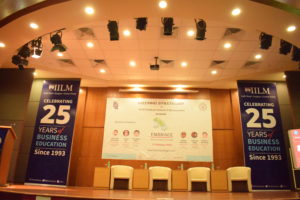I met my ex-boss at the airport the other day and asked about how life was! She was my senior for 6 years, and was serving the 25th year of her employment in the company when I exited. We spoke animatedly and one thing led to another. I expected her to say that she was serving her 30th year in the same organisation but she didn’t. Instead she told me about her fantastic life of doing things at the pace she wants and picking up few projects in the year and that leaves her unoccupied at least for couple of months in the year.
This is when the new high of gig working occurred to me. For the uninitiated, the gig economy is a free market system where organizations and independent workers engage in short-term work arrangements. The word “gig” refers to the transient nature of the job itself.
1The gig economy definition encompasses all sorts of contingent work arrangements, for example:
- Freelancers
- Consultants
- Independent contractors and professionals
- Temps (temporary contract workers)
There was a time when people struggled to find flexible roles and opportunities of that of a freelancer. Not any more – Recently, CNBC reported that the gig economy employed just about one out of three American workers in 2019. These 57 million freelancers represent an increase of about 3 million workers since 2016. While some people freelance to supplement their main income, others rely upon freelancing as their sole source of support. It’s interesting to note that NASDAQ predicted a larger increase, up to 43 percent of the workforce by 2020, in their 2016 report. India alone boasts of 15 million freelancers today.
What motivates the gig workers to take up the flexible roles
- Gig workers cherish the independence over the fixed, regular and stable income and job. Uncertainties with respect to work patterns, assignments loom large but they pale against the benefit of having to do work at your own pace.
- They remain away from hierarchy, adherence to authority and other corporate conformance. They take up assignments that interest them and avoid the mundane and the uninteresting work
- The assignments taken up are more based on choice than need. Parents, family caretakers, and plenty of others have started to understand the benefits of having more control over their schedules. While freelancers sacrifice benefits and in some cases, job security, they gain the ability to set their own hours. Just as important for many, they can choose who to accept work. There is higher job satisfaction and happiness in a choice-based assignment. The key element is commitment over loyalty and committed work creates value and word of mouth to get in more work for the gig worker.
- Contract and temporary jobs have always served people as a way to gain experience and get their foot inside a corporate door. As the gig economy continues to expand, Harvard Business Review2 made the case that colleges should note the change and do a better job of preparing students for alternative routes to their chosen career fields. These days, the gig economy provides businesses with more than creative talent, including human resources, accounting, software, engineering, and even executive officers.
How does the future look
The key imperative for a gig worker is to lead a life of discipline and commitment as he /she operates in a non-formal setting. Having a sense of direction and purpose, networking and visibility are parts of being a successful gig worker. Being resilient and resourceful keeps him/her afloat in the competitive and dynamic world.
To conclude, freelancing offers a 21st Century solution for flexibility, productivity, and scalability. Even though it has not grown as much as it was predicted, the gig economy will probably continue to provide a large part of the overall economy and increase in size nationally and globally.
References :
1https://zety.com/blog/gig-economy-statistics
2https://hbr.org/2019/10/universities-should-be-preparing-students-for-the-gig-economy







